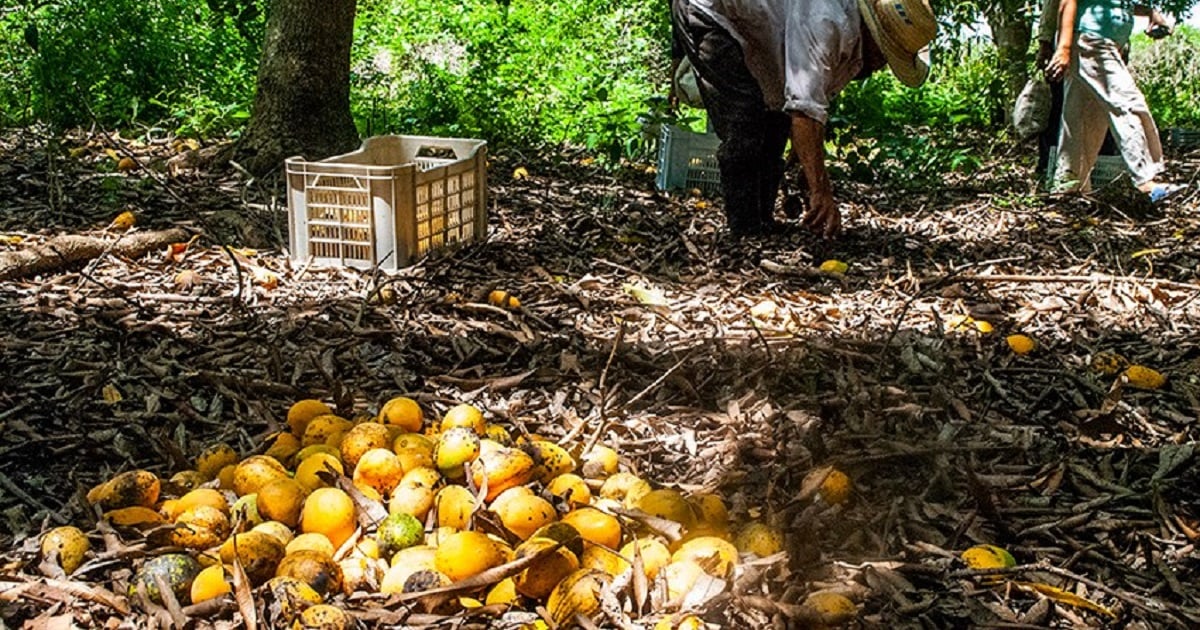The upcoming mango harvest in Granma province, which spans from May to August, is facing potential chaos due to inadequate planning and resource management. Agricultural officials have voiced concerns that this season could result in significant waste, with thousands of tons of fruit possibly going unutilized.
Rogelio Solano Socarrás, head of the Provincial Agriculture Delegation's marketing department, revealed that the expected harvest ranges from 25,000 to 30,000 tons, exceeding last year's numbers. However, he acknowledged that during the peak ripening period—between May 15 and June 10—the province's capacity for collection, transportation, and processing will be overwhelmed.
The food processing industry, which is tasked with handling the mangoes, can only manage around 5,000 tons, equating to less than 20% of the anticipated volume. Of this capacity, 1,000 tons of pulp are allocated for producing baby food, as reported by Solano to the provincial newspaper La Demajagua.
Preliminary estimates indicate that the eastern province will need about 15,000 tons to meet the demands of factories, small-scale industries, the agricultural market network, sales points, social consumption, and to a lesser extent, tourism. This challenge is compounded by a fuel crisis that hampers the transportation of mangoes from mountainous areas like Bartolomé Masó, Buey Arriba, and Guisa, as well as Yara and Bayamo, the main production hubs.
Solano emphasized the ongoing efforts to find markets and alternative destinations to prevent the fruit from being wasted. "We are organizing collection points and seeking alternative transportation methods, making optimal use of the limited fuel available to ensure the mangoes reach their intended destinations," he stated, without providing specifics on these strategies.
The official mentioned measures within the business system that purportedly increase motivation among producers and improve the supply chain to prevent loss of raw materials. However, details on incentives, guaranteed payments, or access to necessary supplies—key issues in previous campaigns that resulted in spoiled mangoes due to poor planning—were not disclosed.
The urgency to maximize the harvest also includes supplying the commerce network, gastronomy, and social centers like hospitals and schools at "affordable" prices. Yet, how this will be achieved or the actual volumes reaching the population remain unspecified.
There are plans to keep sales outlets open at the canning industry facilities and use "other channels" to bring the product closer to communities. The success of these measures hinges on factors the government admits it cannot fully control.
The inefficiencies of Cuba's production model lead to the annual spoilage of thousands of tons of mangoes and other crops, even as Cubans face severe food shortages. This waste is attributed to bureaucratic processes and the ineffectiveness of state-run companies under the Ministry of Agriculture in collecting, distributing, and selling agricultural products.
There have been reports of tons of mangoes rotting outside canning factories before being offered to the public. Authorities have blamed this on fuel shortages and other resource constraints, which starkly contrasts with the regime's rhetoric on achieving food sovereignty and calling for Cubans to cultivate any available land, no matter how small.
Mango Harvest Issues and Solutions in Granma
What is the expected mango yield in Granma this season?
The expected mango harvest in Granma province is between 25,000 and 30,000 tons.
Why might there be a waste of mangoes this season?
The waste may occur due to logistical challenges, including limited processing capacity and transportation issues exacerbated by a fuel shortage.
How is the province planning to handle the surplus of mangoes?
Officials are seeking markets and alternative transportation methods to prevent spoilage, though specific strategies have not been detailed.
